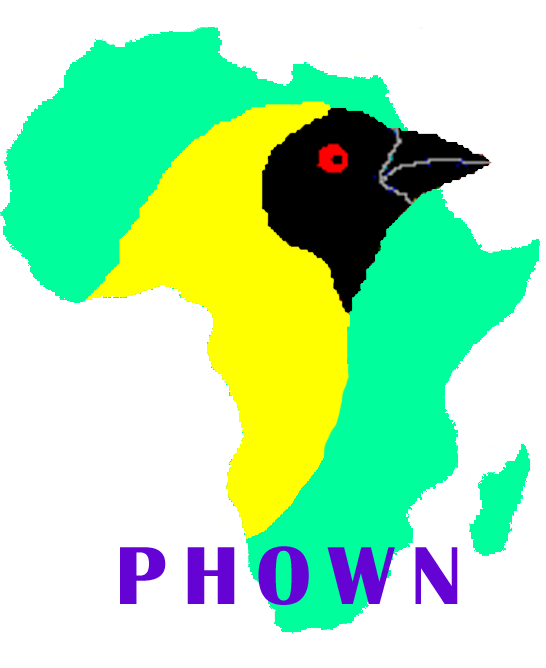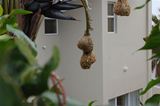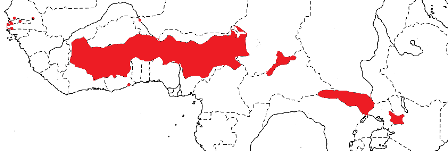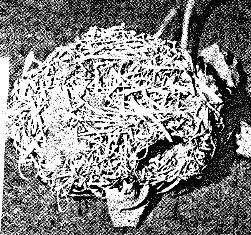Weaver species
Choose different species from drop-down list and press 'Go' button. See Full species list.Heuglin's Masked Weaver Ploceus heuglini
IUCN: Least concern Discovery: 080Categories: acacias, fruit, baobab, pest, Nest use,
News items about species
Discovery
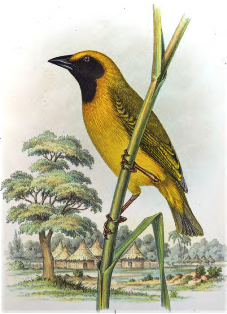
figure from Heuglin (1869) 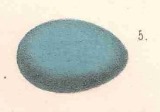
figure from Heuglin (1873) 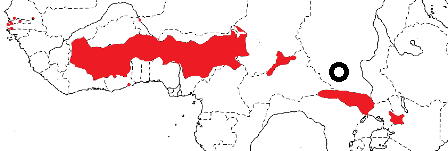
distribution, type locality circled IntroductionHeuglin's Masked Weaver was formally described by Anton Reichenow, a German ornithologist and herpetologist.Heuglin's Masked Weaver was collected by Martin Theodor von Heuglin, a German explorer and ornithologist in north-eastern Africa. He collected a large number of birds, including new species, in East Africa. In 1861 Heuglin led an expedition, starting from Massawa in Eritrea, towards Khartoum via a wide detour through Ethiopia. In 1863 Heuglin continued from Khartoum to explore a great part of the Bahr-el-Ghazal river in South Sudan. The Bahr el Ghazal, meaning "sea of gazelles", is a tributary of the White Nile. Heuglin described this species in 1864, soon after returning to Europe from NE Africa. However, he named it as Textor atrogularis ("black-throated"), a name which had already been used for the Black-necked Weaver by Voigt (1831), a name no longer valid for the latter species, but nevertheless one that cannot be used for Heuglin's Masked Weaver. This error was realised by Reichenow, who re-named Heuglin's Masked Weaver in honour of Heuglin. The first illustration of the Heuglin's Masked Weaver was of the type, published by Heuglin (1869), repeated in 1871. The second illustration for the species was of the egg, in Heuglin (1873). Scientific citationPloceus heuglini Reichenow 1886, Zool. Jahrb. I, p.147, Bahr-el-Ghazal, Sudan.Meaning of namesheuglini, After Theodor von Heuglin (1824-1876) German explorer, ornithologist, and author.First English nameHeuglin's Masked-Weaver (Shelley 1905).Alternate namesPlain-backed Masked Weaver, Senegal Masked Weaver.CollectorTheodor von Heuglin.Date collectedAug 1863.Locality collectedGazellenfluss=Bahr el Ghazal, South Sudan.Type specimensThere are at least one type (in the Leiden Museum), but there may be more syntypes. |
The above is based on Weaver Wednesday 2, a weekly series about the discovery of each weaver species.
This species text first appeared as
Weaver Wednesday [197] - Discovery [80]: Heuglin's Masked Weaver on 2016-03-23
1. Basic biology
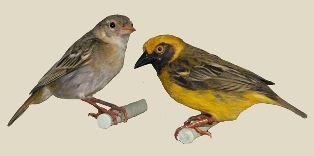
figure from Wikipedia Distribution.
Heuglin's Masked Weaver is found in the woodland savanna belt from southern Senegal and Gambia, across West Africa to extreme western Kenya (see map below based on Birds of Africa). No subspecies are recognised.
Habitat. Heuglin's Masked Weaver inhabits savanna woodland, coastal thickets, secondary scrubland and is found around farms and villages. It generally prefers dry, tall woodland areas. Heuglin's Masked Weaver moves away from its breeding areas after nesting and movements may be related to regional rainfall patterns. Food.
Heuglin's Masked Weaver feeds mainly on arthropods, including spiders, caterpillars, beetles, dragonflies, grasshoppers. It also feeds on fruits and grass seeds. In Ivory Coast, its diet was estimated as 70% arthropods, 10% fruit and 20% seeds by weight. Heuglin's Masked Weaver examines leaves and flowers, apparently searching for insects.
Breeding. Heuglin's Masked Weaver is polygynous. It is a colonial or solitary nester, typically having up to 15 nests in a colony. The same sites are used annually, and sites are usually away from water. Heuglin's Masked Weaver may form mixed colonies with other weaver species. The nest is kidney-shaped, with a tunnel up to 20 cm long extending from the entrance. The nest is placed in a tree, or often attached to telephone lines with each nest woven to the wire throughout its width for additional stability. The nest is coarsely woven by the male using strips of grass or grass stems, and may be completed in a day. The male displays by quivering his wings and tail, or beating his wings, while hanging below a nest. If a female accepts a nest, she lines it with downy flowerheads of grasses. The male does not strip leaves from the vegetation around the nest. Heuglin's Masked Weavers often choose protected nest sites. One colony overhung the entrance of a busy rest house in Nigeria. Nests may be attached to the base of the nests of an Augur Buzzard Buteo auguralis, Crowned Hawk-eagle Stephanoaetus coronatus, African White-backed Vulture Gyps africanus, Marabou Leptoptilus crumeniferus or Abdim's Stork Ciconia abdimii.
Old nests of the Heuglin's Masked Weaver may be taken over by the Cut-throat Finch Amadina fasciata, African Silverbill Euodice cantans, or Red-cheeked Cordon-bleu Uraeginthus bengalus. |
The above is based on Weaver Wednesday, a weekly series about weaver species.
This species text first appeared as
Weaver Wednesday [69]: Heuglin's Masked Weaver on 2013-10-09
2. Breeding facts
| Pair bond polygynous Breeding season Aug in Senegal, Jul and Sept-Oct in Mali, Mar-Jul in Ghana, Aug-Sept in Togo, May-Sept in Benin, May-Aug and Jul-Oct at different sites in Nigeria, Aug-Sept in Sudan, Jan-Mar in NE DRCongo, and Jun and Feb in Uganda Nest site placed in tree, or often attached to telephone line (each nest woven to the wire throughout its width); one group of nests overhung entrance of busy rest house in Nigeria Nest building coarsely woven by male Colony size Colonial or solitary nester, typically in groups of up to 15 nests Clutch size 2-4 eggs (average 2.2 in Nigeria) Egg colour plain tuquoise-blue, or pale blue with very fine brown spots Egg size average size of 30 eggs 20.9 x 14.6 mm (Nigeria) Incubation incubation by female, period 12-13 days Chicks and nestling period chicks fed by female alone, nestling period 14-18 days |
Breeding information based on Handbook of the Birds of the World, Vol. 15.
3. Photos of Weaver Nests
 Vm 29498 |  Vm 3725 |
Thumb-nails of most recent PHOWN records - click on one to see its full record
See all PHOWN records for this species here.
PHOWN (Photos of Weaver Nests) provides valuable info on breeding distribution and colony sizes of weavers.
You can contribute by registering and submitting photos at Virtual Museum webpage.
4. Breeding distribution
Google map showing distribution (For species with small ranges you need to zoom in at the correct area to see the range):
yellow blob - range of weaver species; read more about this here.
![]() - PHOWN records with photos
- PHOWN records with photos
![]() - PHOWN records with no photos (Nest Record Cards, other records)
- PHOWN records with no photos (Nest Record Cards, other records)
![]() - Birdpix records
- Birdpix records
![]() - comments on out of range records, or interesting records
- comments on out of range records, or interesting records
![]() - type locality
- type locality
CLICK on the marker on the map to see individual record details.
5. Range changes
Not South African speciesThe above is based on Weaver Wednesday 3, a weekly series about range changes in South African weaver species.
This species text first appeared as
n/a







